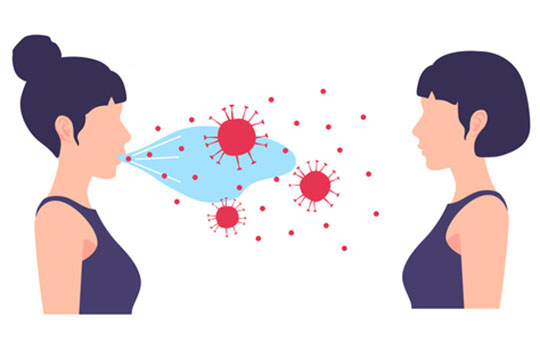Respiratory viruses infect the human respiratory tract and cause respiratory diseases, including influenza, coronavirus, adenovirus, and parainfluenza virus.
These viruses can be spread through airborne transmissions, such as coughing, sneezing, and talking, are easily spread by being inhaled by others, and are one of the common respiratory infections in crowded places. In addition, respiratory viruses can also be transmitted by contact, such as touching an infected surface and then touching the mouth, nose, or eyes with your hands, which can also cause the virus to spread.

Most respiratory viruses cause a range of symptoms, including cough, runny nose, sore throat, headache, muscle aches, and fatigue. These symptoms are usually mild and disappear on their own within a week or so. However, respiratory viruses can also cause serious conditions such as Severe Acute Respiratory Syndrome (SARS) and Middle East Respiratory Syndrome (MERS).
The influenza virus is one of the most well-known respiratory viruses. There are several subtypes of influenza viruses, the most deadly of which is the H5N1 subtype, which can cause high fever, respiratory distress, cough, and other symptoms that can be fatal in severe cases. For this reason, the World Health Organization (WHO) recommends that people around the world get vaccinated against influenza every year to protect themselves and others.

In recent years, coronaviruses have also attracted global attention. SARS-CoV-2 is a novel coronavirus that is the causative agent of new coronavirus pneumonia (COVID-19). This virus spreads extremely rapidly and has varying degrees of severity of symptoms, with some people infected with little to no symptoms and others who may require hospitalization. Prevention of New Coronavirus pneumonia includes wearing a mask, maintaining social distancing, and washing hands regularly.

Adenovirus and parainfluenza viruses are also common respiratory viruses. Adenoviruses can cause flu-like symptoms, coughs, and sore throats, and are especially common in infants and young children. Parainfluenza viruses cause similar symptoms to influenza viruses, but the symptoms are generally milder.

There are several ways to prevent the spread of respiratory viruses. First, wearing a mask can protect yourself and others by preventing the spread of airborne droplets. Second, washing your hands regularly can reduce the spread of the virus from your hands. In addition, maintaining social distance is an effective way to prevent the spread of the virus. Finally, regular vaccinations can improve your immunity and reduce the risk of infection.
If you feel you have a respiratory virus, it is best to stay home, avoid contact with others, and follow your doctor's recommendations for treatment. Treatment usually includes getting plenty of rest, drinking plenty of water, eating healthy foods, and avoiding bad-for-you behaviors such as smoking and drinking alcohol.

In conclusion, respiratory viruses are responsible for many respiratory diseases. Understanding how these viruses are transmitted, their symptoms, and methods of prevention are key to protecting ourselves and others from infection. It is the responsibility of each of us to prevent and control the spread of respiratory viruses, especially during epidemics, and taking appropriate protective measures can reduce the risk of virus transmission.
We hope this article has provided useful information to help you better understand and cope with respiratory viruses.





